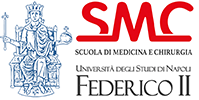




Prof. Francesco Amato, Prof.ssa Maria Romano, Prof. Carlo Cosentino, Prof.ssa M. Francesca Spadea, Prof. Declan Bates.
Goals
- To provide the clinicians with a quantitative tool to analyze time-series measurement of specific cardiac biomarkers concentration, with the final goal of enhancing the diagnostic and prognostic procedures;
- To demonstrate the feasibility of magnetic resonance imaging (MRI)-based proton therapy planning for the brain by assessing the range shift error within the clinical acceptance threshold;
- To extract new information from biomedical signals for improving the detection of suspicious conditions; in particular, in foetal monitoring;
- Exploiting prior knowledge and preferential attachment to infer biological interaction networks.
Results
- The development of a novel mathematical model of cTnT release into the plasma after the onset of AMI; the resulting estimated responses show that it is able to identify with good approximation the first peak time point;
- The multiplane DCNN approach significantly improved the sCT prediction compared with other DCNN methods presented in the literature; furthermore, it was demonstrated to be highly accurate for MRI-only proton planning purposes;
- The proposed parameters (e.g. STV) and signal processing methods (e.g. an approach for FHRV estimation) showed best performance with respect to those suggested in literature.
Keywords
Acute myocardial infarction, systems biology, biological models, CT and MR images, foetal heart rate variability, spline filtering.






